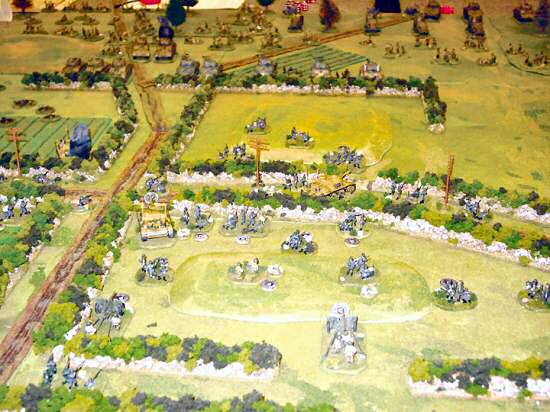I mount my ships on painting sticks, with small bits of scrap sprue attached to keep the painted hulls from contact with the stick (and avoid having some of the paint pull off when I remove the model). The ships are attached to the sticks (as are the scenic bases), and then sprayed with the basic Lowe's Hardware cheap flat-white primer.
With small models, paint appears darker simply due to size, and so I prefer a lighter undercoat to avoid darkening the shade further. I also try and allow any enamel primer to dry for at least 24 (and, preferably, 48) hours. Much like washing the figures before painting, I'm not positive it helps adhesion, but it certainly can't hurt.

Once the models are dry, I go over with an initial block painting.
For the Virginia, I used Vallejo Medium Gray for the hull and casement. Most color drawings pulled off the net showed darker brownish wood decks on the bow, stern, and top of the casement, so I chose Vallejo Beige Brown as a good medium brown. The stack was painted GW Chaos Black, and for now, the flag was left unpainted.
Texas was a newer ship (Virginia was essentially the old USS Merrimac rebuilt) and for her decks, I used Vallejo Iraqi Sand to represent fresh-cut decking. The casement was painted Vallejo Gunmetal. The hull was done in Vallejo Medium Gray, the boats Vallejo Beige Brown with GW White tops, and the stack also GW Chaos Black. Again, the flag was left unpainted.
Monitor was a bigger problem deciding how to paint. Looking at my references and around the internet, I saw all-black drawings, all-gray drawings, and black with a gray deck. Since the package provides three models, I went with one of each scheme. The all-gray version is Vallejo Light Gray; the all-black version is Chaos Black drybrushed with Testors Grimy Black, and the third variant is a Chaos Black with Vallejo Light Gray. I added flags to two versions, and left the third 'as is' for comparison.

Once the block painting was complete, I washed the finished ships with a thin black ink wash and - after a 24-hour drying period - a careful drybrush reapplication of the same hull colors (since the wash tends to turn the paint a bit darker overall). The initial colors were then reapplied by drybrush, after adding a bit of Vallejo Pale Sand to provide a highlight on the broader hull, superstructure and deck areas. The gunmetal casement of Texas received several coats of a more intense ink wash, to tone down any shine and leave a darkened metal look. At that point, the respective flags were painted in using a 10-O brush.
The bases were painted using a thinned coat of Vallejo Dark Sea Blue, followed by a drybrush of Vallejo Intermediate Blue. The wakes were painted in using GW White, using a 'heavy handed' drybrush style that leaves some paint on the brush.
These ships were not fast, and the wakes should be understated. Neither the Monitor nor the Virginia could move fast enough to create the look of a 'bone in their teeth' of the classic curling bow wave.










